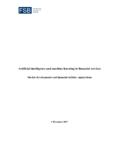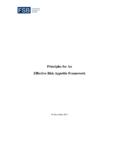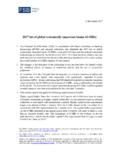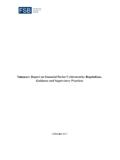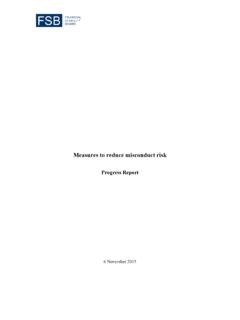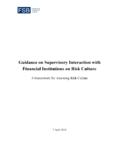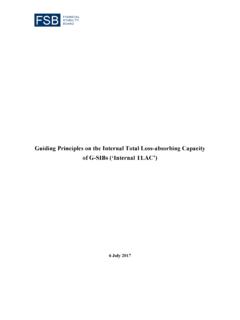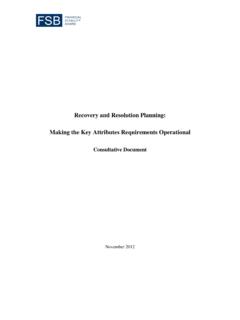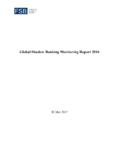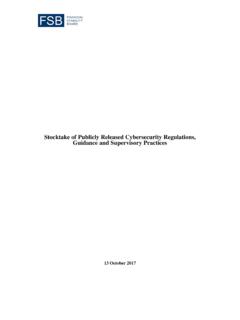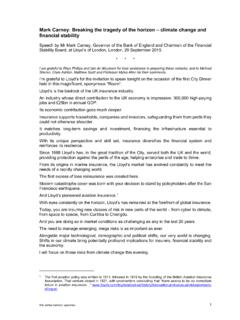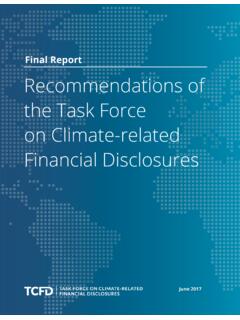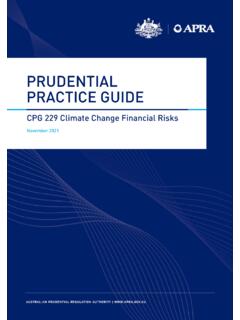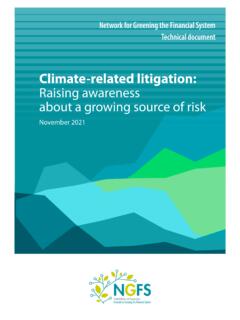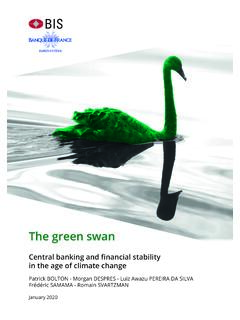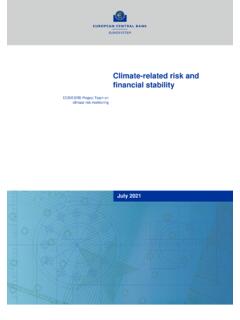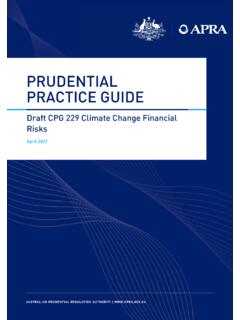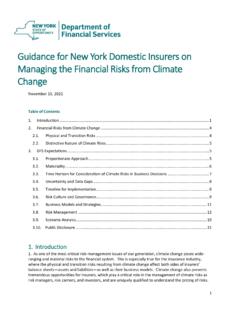Transcription of The Implications of Climate Change for Financial Stability
1 The Implications of Climate Change for Financial Stability 23 November 2020 The Financial Stability Board (FSB) coordinates at the international level the work of national Financial authorities and international standard-setting bodies in order to develop and promote the implementation of effective regulatory, supervisory and other Financial sector policies. Its mandate is set out in the FSB Charter, which governs the policymaking and related activities of the FSB. These activities, including any decisions reached in their context, shall not be binding or give rise to any legal rights or obligations. Contact the Financial Stability Board Sign up for e-mail alerts: Follow the FSB on Twitter: @FinStbBoard E-mail the FSB at: Copyright 2020 Financial Stability Board.
2 Please refer to the terms and conditions iii Table of Contents Executive summary .. 1 1. Introduction .. 3 2. Climate -related risks to Financial Stability .. 4 Physical risks .. 5 Transition risks .. 12 Liability risks .. 16 3. Transmission and amplification mechanisms .. 17 Changes in the pricing and management of Financial risks .. 18 Potential for pro-cyclical behaviour by market participants .. 19 Self-reinforcing reductions in bank lending and insurance provision .. 20 4. Cross-border transmission of Climate -related risks .. 25 5. Mitigating Climate -related risks .. 28 Actions by Financial institutions .. 29 Financial authorities actions.
3 31 6. Next steps .. 32 1 Executive summary This report discusses the potential Implications of Climate Change for Financial Stability . It investigates channels through which Climate -related risks might impact the Financial system. It also examines potential mechanisms within the Financial system that might amplify the effects of Climate -related risk as well as the cross-border transmission of risks. The report draws on existing work by the official and private sector. Such work is, in places, nascent in its consideration of risks to Financial Stability . In places, therefore, the report raises issues that go beyond those discussed in the existing literature.
4 Risks to Financial Stability from Climate Change can be divided into physical and transition risks. The value of Financial assets/liabilities could be affected either by the actual or expected economic effects of a continuation in Climate Change (physical risks), or by an adjustment towards a low-carbon economy (transition risks). Current central estimates of the impact of physical risks on asset prices appear relatively contained but may be subject to considerable tail risk. The manifestation of physical risks particularly that prompted by a self-reinforcing acceleration in Climate Change and its economic effects could lead to a sharp fall in asset prices and increase in uncertainty.
5 This could have a destabilising effect on the Financial system, including in the relatively short term. Market and credit risks could also be concentrated in certain sectors of the real economy and geographies. Disruption could also occur at national level. Some emerging market and developing economies (EMDEs) that are more vulnerable to Climate -related risks, especially those in which mechanisms for sharing Financial risk are less developed, may be particularly affected. A disorderly transition to a low carbon economy could also have a destabilising effect on the Financial system. This could be brought about by an abrupt Change in (actual or expected) public policy not anticipated by market participants, including that due to the increased materialisation of physical risks, as well as technological developments.
6 In such a scenario, physical and transition risks might combine, amplifying their overall effect on Financial Stability . Central estimates of the impact on asset prices of a well-anticipated transition to a low carbon economy are relatively contained, although there are many measurement uncertainties. Climate -related risks may also affect how the global Financial system responds to shocks. They may give rise to abrupt increases in risk premia across a wide range of assets. This could alter asset price (co-)movement across sectors and jurisdictions; amplify credit, liquidity and counterparty risks; and challenge Financial risk management in ways that are hard to predict.
7 Such changes may weaken the effectiveness of some current approaches to risk diversification and management. This may in turn affect Financial system resilience and lead to a self-reinforcing reduction in bank lending and insurance provision. The breadth and magnitude of Climate -related risks might make these effects more pernicious than in the case of other economic risks. Moreover, the interaction of Climate -related risks with other macroeconomic vulnerabilities could increase risks to Financial Stability . For instance, certain EMDEs that are particularly vulnerable to Climate Change are also dependent on cross-border bank lending. 2 There are various actions that Financial institutions can take and are taking to reduce or manage their exposure to Climate -related risks.
8 However, some authorities find that these are not applied systematically by most firms. The efficacy of such actions taken by Financial firms may also be hampered by a lack of data with which to assess clients exposures to Climate -related risks, or the magnitude of the effects described above. Actions taken by individual Financial institutions may also not by themselves mitigate broader Climate -related risks to Financial Stability . Robust risk management might be supported by initiatives to enhance information with which to assess Climate -related risk. 3 1. Introduction This report discusses the potential Implications of Climate Change for Financial Stability .
9 It investigates channels through which Climate -related risks might impact the Financial system. It also examines potential mechanisms within the Financial system that might amplify the effects of Climate -related risk as well as the cross-border transmission of risks. It also builds on existing work by the FSB and other international bodies. In doing so, it identifies how risks to Financial Stability from Climate Change may differ from risks from other vulnerabilities or forms of structural Change . The effects of Climate Change may be far-reaching in their breadth and magnitude, and could affect a wide variety of firms, sectors and geographies in a highly correlated manner.
10 The impact of such risks may be Different types of Climate -related risks ( physical and transition) may also crystallise simultaneously, which might amplify their effect on the Financial system. Risks to the Financial system from Climate Change tend to be particularly uncertain in both their severity and the time horizon over which they might crystallise. They may also be more dependent on measures taken by policymakers. It is difficult to quantify risks to Financial Stability from Climate Change precisely. The future path of Climate Change and its impact on the Financial system are highly uncertain and could be non-linear over time.
